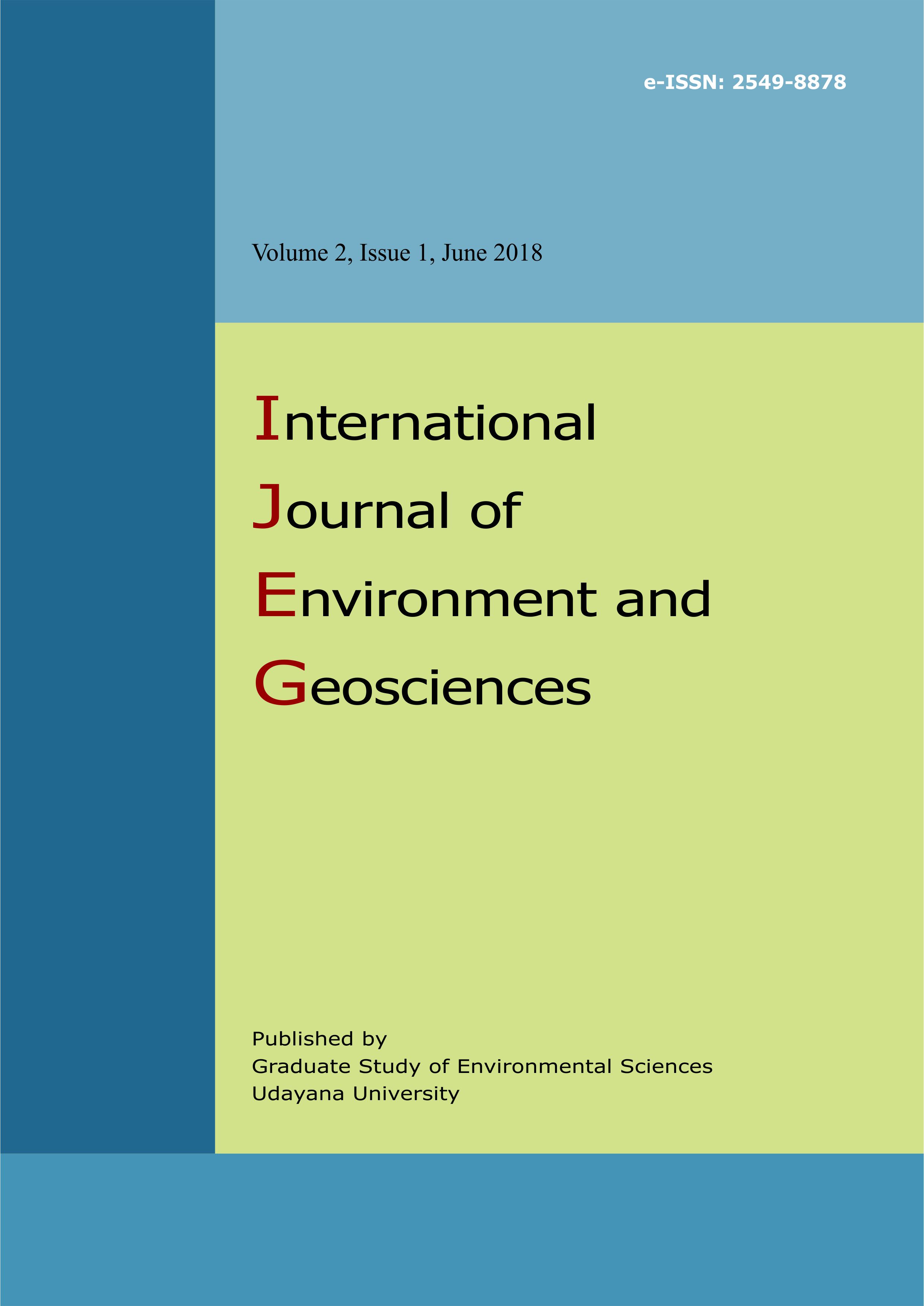Coral Reef and Shallow Water Benthic Identification Using Landsat 7 ETM+ Satellite Data in Nusa Penida District
Abstract
This study aims to investigate the feasibility of Landsat 7 ETM+ to identify coral reefs and shallow water benthic at Nusa Penida district in 2009 and 2012, comparison with the Reef Health Monitoring (RHM) results conducted by the Coral Triangle Center (CTC) using the Point Intercept Transect (PIT) method in the same periods. This study also aims to determine the changes of coral reefs and shallow water benthic cover during this period and the distribution at Nusa Penida districk. Shallow water benthic classification refers to English et al. (1997), with a modified by the addition of vegetation classes (seagrass and seaweed). The classification result using confusion matrix between the Reef Health Monitoring (RHM) with the classification of satellite image in 2009 obtained an accuracy rate of 65.85% with a kappa coefficient value of 0.525, while in 2012 the accuracy value obtained of 74.81% with kappa coefficient value of 0.650, which shows the results of that classification of satellite images of Landsat 7 ETM+ with the results of in-situ research is in a moderate level.
Downloads
Authors who publish with this journal agree to the following terms:
- All articles published by International Journal of Environment and Geosciences (IJEG) and Graduate Study of Environmental Sciences, Udayana University are made available under an open access license worldwide immediately. This means everyone has free and unlimited access to the full-text of all articles published in International Journal of Environment and Geosciences (IJEG), and everyone is free to re-use the published material given proper accreditation/citation of the original publication. Open access publication is supported by authors' institutes or research funding agency by payment of a comparatively article processing charge for accepted articles (See Author Fees). International Journal of Environment and Geosciences (IJEG) and Graduate Study of Environmental Sciences, Udayana University publish articles under the Creative Commons Attribution License.
- Authors are able to enter into separate, additional contractual arrangements for the non-exclusive distribution of the journal's published version of the work (e.g., post it to an institutional repository or publish it in a book), with an acknowledgement of its initial publication in this journal.
- Authors are permitted and encouraged to post their work online (e.g., in institutional repositories or on their website) prior to and during the submission process, as it can lead to productive exchanges, as well as earlier and greater citation of published work (See The Effect of Open Access).





